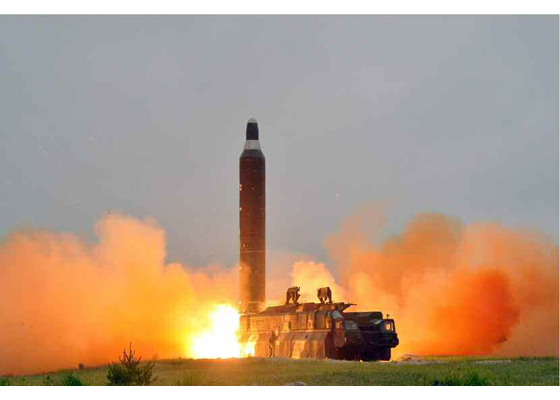Monitoring the Threat: a Timeline of North Korean Missile Tests 2013-2016
Introduction by John Schilling

In a simpler time, it was sufficient to google “North Korean 2006 Missile Test” and find that, yes, the North Koreans conducted a single missile test in 2006 along with all the accompanying data known. But things aren’t that simple anymore. Now if you search for information on “the North Korean 2014 missile test,” 15 separate events pop up. To address this new complexity, 38 North has developed a timeline of North Korea’s missile tests from 2013 to the present to help understand and track trends in the North’s missile development.
On the right side of the timeline are all the firings of North Korea’s operational missile systems: mostly Scuds, the occasional Nodong and increasingly the new KN-02 “Toksa.” These tests are now conducted a dozen or so times a year. It is almost misleading to call these “tests” anymore, as they may be better designated as training exercises, demonstrations of power, or both. North Korea has enough of these missiles to be willing to expend a dozen or so per year. Moreover, it has become clear over the past few years that the missiles are reliable enough for wartime use, and their crews are trained and experienced in using them.
On the left are the real tests: the flight and ground experiments with the North’s more ambitious systems still under development. A decade ago, North Korea would have had only one new missile under development at a time, and would conduct a test maybe once in a year. Now it has the Unha satellite launch vehicle, the Musudan intermediate-range ballistic missile, and the KN-11/ Bukkeukseong-1 submarine-launched ballistic missile flying almost back to back. In the latter two cases, roughly half a dozen tests have been conducted in the past year alone. Other developments include ground test activity for the new KN-08/KN-14 intercontinental ballistic missile and a yet-unnamed solid-propellant intermediate-range ballistic missile presumed under development.
What is particularly unprecedented is that the North Koreans are showing most of these tests and exercises of power to the international community, including ground tests that they could have kept hidden. They have their reasons, most of which presumably fall into the category of propaganda. But their propaganda is raw data for analysts. For instance, information was nebulous around the first-stage engines of the KN-08, and the large solid-fuel rocket engine program was a complete unknown, until the North Korean media released the corresponding images. Similarly, the extent of North Korea’s modifications to the Musudan, even after it had successfully flown, remained unknown until the North released new photos. Possibly parts of what we are being shown are misdirection. But if they are playing a shell game, analysts should be using every resource available to keep track of every moving ball and cup.
This timeline will be updated as North Korea continues to conduct missile tests.
(Click image to download as a PDF)

